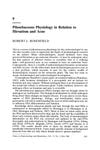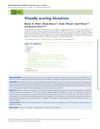Hirsutism in Adolescent Females

TLDR The conclusion is that young women with excessive hair growth should be quickly tested for hormonal issues and treated to improve their social well-being.
The document emphasizes the importance of promptly evaluating adolescent females who report excessive hair growth, focusing on ruling out androgen-secreting tumors and treatable adrenal conditions. A basic evaluation should include tests for total serum testosterone, DHEA-S, and prolactin levels. The decision for additional testing should be based on whether it would significantly change the treatment approach. Management strategies involve addressing any identifiable sources of androgens, correcting hormonal imbalances, and providing cosmetic treatments like electrolysis for existing hair. Effective treatment is crucial for the social well-being of young women experiencing this condition.

